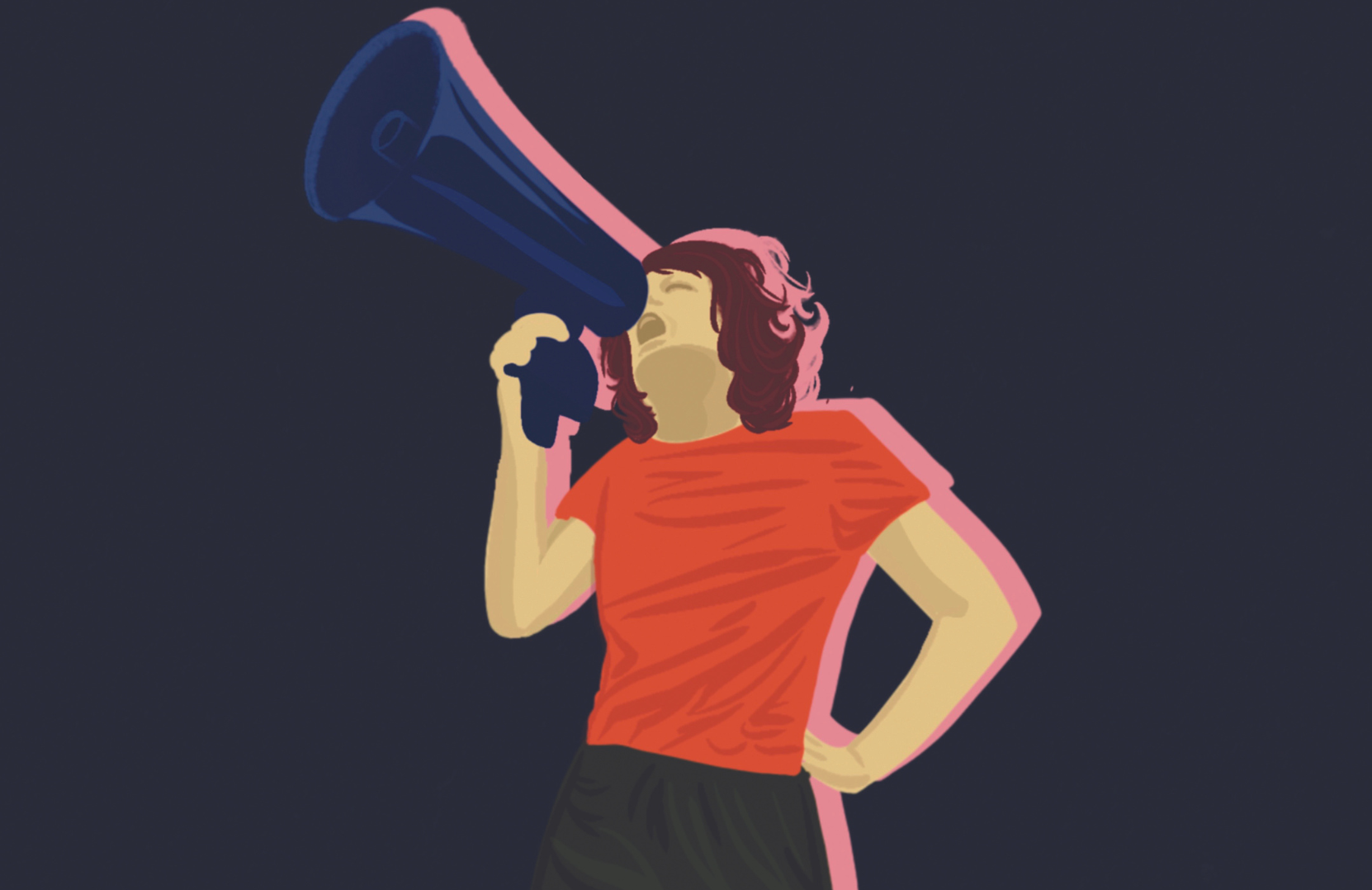A woman walks into a doctor’s office with heavy menstrual bleeding and asks to be treated. The first doctor tells her that her symptoms are normal. The second doctor tells her that she’s overreacting — that it can’t be that bad. The third doctor gives her a prescription for birth control that doesn’t get to the root of the problem.
For so many women, non-binary, and trans individuals, this isn’t the start of a “walks into a bar” joke but a painful reality.
Carmen Wyton, chair of the Women’s Health Coalition (WHC) that advocates for sexual, reproductive, and menstrual health through all ages and stages, explains that the system around women’s health still has many issues. “People think it’s good enough… but it is broken,” she says. “I have been shocked at times when I have a sense of the disparity and the bias.”
Heavy menstrual bleeding, Wyton notes, could be indicative of deeper issues that are rarely explored. “It could be due to uterine fibroids or endometriosis or any other number of things,” she says. “But that isn’t the discussion… heavy menstrual bleeding is seen as normal, pelvic pain is seen as normal, incontinence is seen as normal. All of those things are dismissed as normal. And just because they happen to a lot of women doesn’t mean they should be left untreated.”
It can take 10 years until episodic treatment leads to a diagnosis of the actual condition a woman has, says Wyton.
Wyton notes that women experience several common barriers when it comes to their health concerns. Many women don’t take their own health concerns seriously, perhaps because there is a culture that frames women as overreactors. This can mean that women are hesitant to seek out help until their symptoms become significantly worse.
Similarly, if women don’t know how to explain the concerns they have with their body, it is even harder for them to get a diagnosis. And even when women do accurately explain what is happening, Wyton says it is easy for their concerns to be dismissed.
“Gynecological health issues that women face are causing significant drains on the health system… because they’re not treated proactively,” says Wyton. “Everything is ending in surgery… because the system didn’t treat them in the first 10 years.”
“It has been incredibly frustrating and time-consuming to even find a doctor who will listen, never mind one who is equipped to help,” says a respondent of the recent survey conducted by the Alberta Women’s Health Foundation (AWHF).
“It is impossible to be taken seriously or get a real diagnosis by anyone, which is the most frustrating part of the whole process,” says another survey respondent. “I’ve bounced around from my GP to gynecologist to physiotherapist to dermatologist. Each time I’ve had to advocate for myself, and each time I’ve had next to zero resolution or care.”
Additionally, 65 per cent of women do not have a primary health care practitioner, says Wyton. “So 65 per cent of the women are not even having the conversation (about their health concerns) because they don’t have a doctor. And if they are seeing a healthcare provider, it’s on an emergent basis.”
Part of the issue with the state of women’s health is that there is so much stigma around it. Wyton notes that there has been evolution in the language that is used to describe “taboo” topics, but some of that stigma persists.
For example, when Wyton goes to a grocery store and sees an aisle marked feminine hygiene, she will ask a manager to change the sign to menstrual products. “In our evolving world about gender identity, to say that periods only happen to women is a misunderstanding, but also to suggest that menstruation is something dirty is a moniker that makes no sense. Again, it’s just one of those things that’s been around forever.”
“Removing the stigma means normalizing conversations that were taboo, embarrassing, uncomfortable,” adds Wyton.
According to the survey conducted by the AWHF, two-thirds of women surveyed find it difficult talking to their primary health provider about their health concerns.
The Women’s Health Coalition is currently creating a patient self-assessment checklist that women can take into their doctor. It asks the uncomfortable questions that women might not be comfortable talking to their doctor about and removes some of the pressure.
Sanja Kostov, assistant professor in the University of Alberta’s department of family medicine and family physician at the MacEwan University Health Centre (specializing in reproductive and sexual health), oversees the reproductive curriculum in medical school at the University of Alberta. She says that it is important that medicine students understand that people of different genders have very different needs. One of the best examples of this, she explains, is heart attacks. Men experience crushing chest pain and it can be very obvious that they are having a heart attack, but in women, symptoms can be very different, for example, nausea and sweating.
“If we only pay attention to what that looks like in a male person, we’re going to miss 50 per cent of the population,” says Kostov. “It’s very much a priority that when we teach this to our medical students and our residents, that we are…. being conscious of how things look in different people of all genders, people of all presentations.”
While research in women’s health has drastically improved over the years — medications for pregnant women used to be only tested on men, says Kostov — there is still a ways to go. Some areas of women’s health are still significantly overlooked and under researched. An example of this, Kostov explains, is the first trimester of pregnancies.
“There is a bit more research now in that area, but actually not that much,” says Kostov. “Surprisingly little.”
Part of the reason for this lack of research is that women don’t want to tell people they’re pregnant during that time in case they have a miscarriage and have to deal with the associated stigma.
“Not a lot of people want to bring up, ‘Hey, I’ve had two miscarriages,’ and yet we know that they’re incredibly common,” adds Kostov. One in five pregnancies ends in early miscarriage, she explains.
Marissa Doroshuk, a master’s student at the University of Calgary, is interested in alleviating some of those research gaps with her master’s study. Her study looks at menstrual cycles, specifically to see how reliable the three-step method is (tracking a menstrual cycle with a calendar, counting ovulation, and using urine and saliva tests to predict the phases of menstruation) and the results of using an app to track menstrual cycles.
“In the past couple of years, (menstrual cycle research) has really just kind of exploded,” says Doroshuk. “Particularly, I would note that there’s a lot of topics looking at the menstrual cycle, basically, how the menstrual cycle might impact X, Y, and Z… as well as looking at the menstrual cycle with athletes.”
She says research around urine and saliva validating methods for menstrual cycles is still lacking.
Additionally, Doroshuk notes that this is an important topic for research because there are a good number of health-care professionals who are not thoroughly educated on the menstrual cycle and who don’t realize the importance of a menstrual cycle for long-term health.
“(Menstrual cycles) are mostly recognized as
something for fertility, or it’s not a big deal unless you’re trying to get pregnant,” she says. “But part of the importance of my study too, and tracking your regular menstrual cycle, is to see if you’re ovulating. Cause that is really important — not just for fertility — that’s impactful for bone health, that’s impactful for possible mood disorders because it’s all linked to progesterone being released.”
Progesterone, a hormone released during ovulation, can have numerous health benefits, says Doroshuk. If women are taking hormonal birth control, which suppresses natural hormone production of progesterone and estrogen, this prevents those health benefits from being realized and can cause additional adverse reactions.
While Doroshuk explains that hormonal birth control is definitely an effective form of contraception and it can be a good solution for some health problems women face, often it doesn’t get to the root of the problem.
“Healthcare workers are very quick to say, ‘Oh, let’s put you on birth control.’ I’ve had that personal experience and… I find it kind of like a Band-Aid solution,” says Doroshuk.
She says that to address the root of the problem and receive a diagnosis instead of episodic treatment, women have to do a lot of advocating. “You really have to advocate for (yourself) and look for a physician that will meet your needs and actually listen to you,” she says. “And that might take some searching and it might take a lot of time, which can be really frustrating.”
Despite the sometimes-bleak outlook on women’s health, Wyton says that seeing the facts, the bias, and the lack of research in women’s health has never discouraged her. It has been shocking at times, but never discouraging “because there is a huge appetite right now to do things differently,” she says.
“(The WHC’s) vision is that women can get the right treatment at the right time for better lived experiences and better health outcomes,” adds Wyton. “Women (need to) be able to take authority over their health experience. They need information, they need access, and they need support. And without that, they can’t take authority over that experience.”
“If we’re going to keep women out of the emergency room, out of the surgical suite, and out of pain, we need to be incorporating women’s health, gynecological health, into every aspect of patient health management and interactions.”
While women experience many barriers in the healthcare system, it’s also important to acknowledge that people of colour, members of the 2SLGBTQ+ community, and people belonging to other marginalized groups experience an even bigger disparity in healthcare treatment and research.
For more information about women’s health barriers, check out the AWF’s study or the WHC’s website.





0 Comments